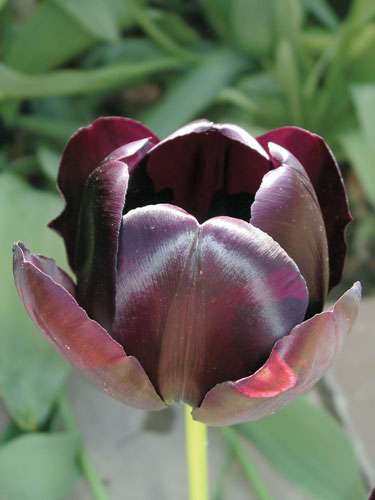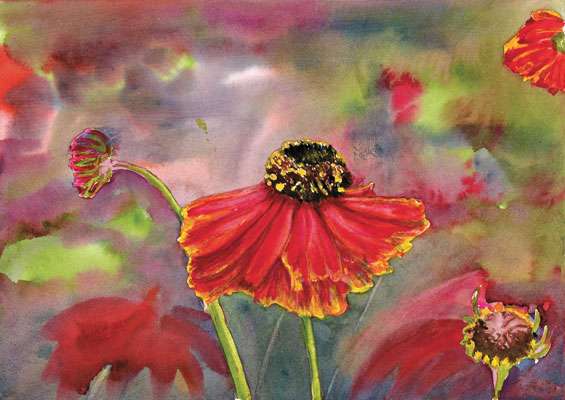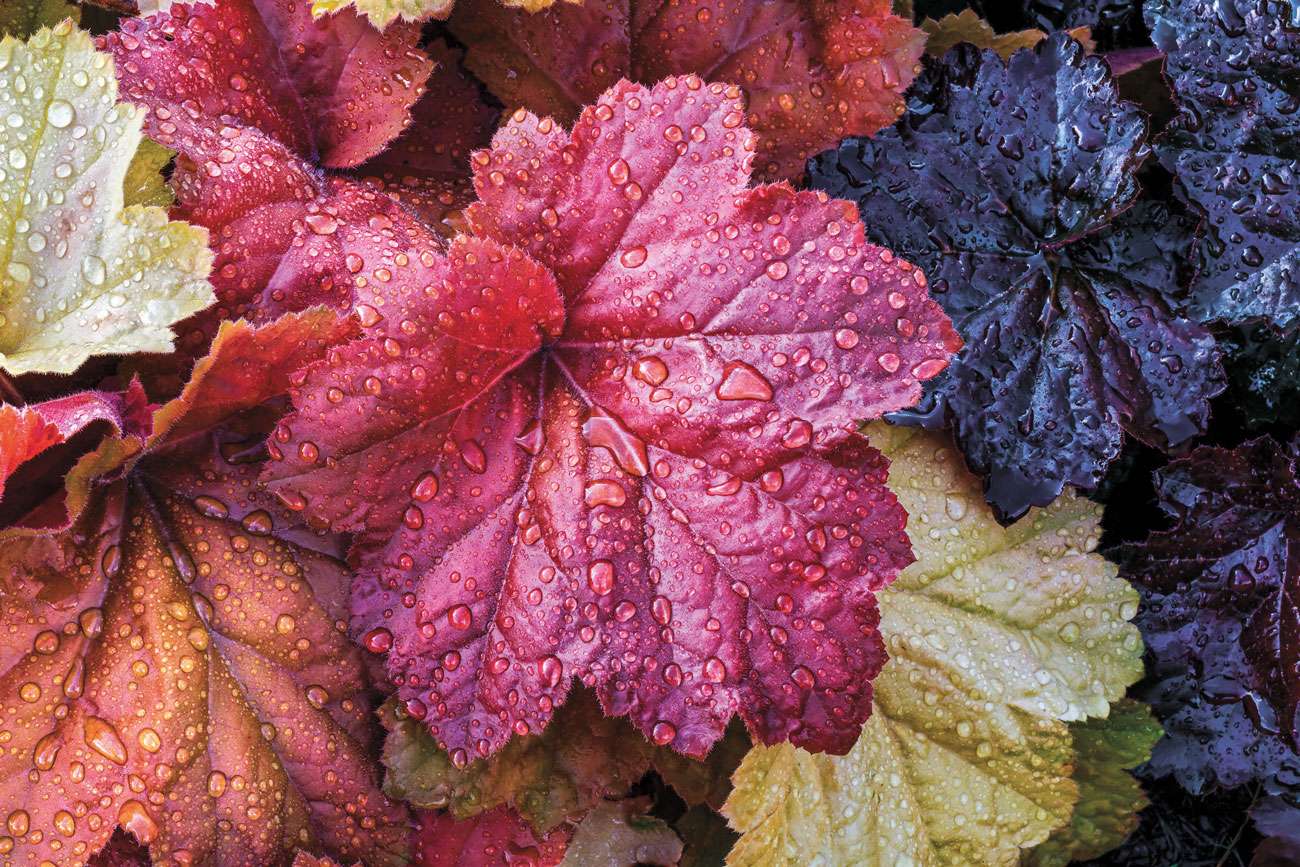
We had some really lovely, sunny days in March, when we could prepare the garden for the next season and enjoy the wonderful brightly coloured yellow, white and orange daffodils. These colours are dominant and so really shine in the garden. Red is also a dominant colour and these bright colours will continue in April with tulips, which come in all shapes, colours and sizes – except black, even though growers have been trying for years to cultivate a variety and the nearest they have come – so far – is the beautiful Queen of Night, as seen above. There is a wonderful display of Tete-a-Tete daffodils and Apeldoorn tulips in the flower beds in Stockland Square, which continue to flower every year, even though they were planted in 2013! Instead of lifting the bulbs out of pots and storing them until next year, I have decided to replant them straightaway into the longer grass under the apple trees, so they can continue to pop up every year – hopefully.
This botanical painting of Tulip Poco Loco was done during a course at Wisley a few years ago, and it actually took 2 days, as every stroke had to be totally accurate!
It is really important when planting a garden to use a range of colours and textures, so that you have a combination of recessive and dominant colours, to provide varying levels of interest. I have just added the lovely Camellia ‘Les Jury’, which has stunning red flowers, that stand out from its dark green leaves. Behind it is the red stemmed Cornus Sibirica Alba, so your eye is taken from one plant to another. Later in the year the pattern continues with bright red poppies to one side and Nasturtium ‘Red Troika’, which has variegated leaves and red flowers climbing up a trellis on the other side.
Many herbaceous plants are starting to flower now and one of my favourites is Pulmonaria, which is a rather delicate looking plant often with mottled leaves and it seems to flourish, even on Cranleigh’s clay. There are 16 known varieties but only 8 of them are widely grown. P. ‘Sissinghurst White’, has soft green leaves with white spots and the flowers are pale pink, when in bud and open to form pure white, funnel-shaped blooms; P. Rubra ‘Redstart’ has bright green, hairy leaves and funnel-shaped coral-red flowers; P. ‘Lewis Palmer’ has slightly hairy, lance-shaped leaves with white spots and small flowers that start off pink, then turn to a vibrant blue and this is my favourite variety. Pulmonaria is native to Europe and western Asia. They grow well in full sun or partial shade and like fairly well draining soil. The plants can be clipped back gently after flowering, to encourage a fresh growth of leaves. They grow vigorously but only to a height of 1 foot and can be easily divided in the autumn, then replanted to create a carpet of colour the following year.
Moving onto annual plants, sweet pea seedlings can be planted out in the garden now, supported by bamboo canes or pea sticks. Towards the end of the month, start to harden off annuals by placing them outside during the day, so they get used to cooler temperatures and prepares them for planting out in May. Actually, I can never wait until May, so most of mine will be outside from mid- April onwards, so I class this as an April job!
I love to spend time with my grandchildren in the garden and Aida, aged 2.5 years was helping me to weed my son’s garden and later on, when she wanted to show her mum what she had been doing. Mummy asked ‘Oh have you been digging up the plants? Aida replied ‘No Mummy, I have been digging up the weeds!’ Another gardener is flourishing!
Do get out and enjoy your garden, as it and us, spring back to an exciting world of nature.







